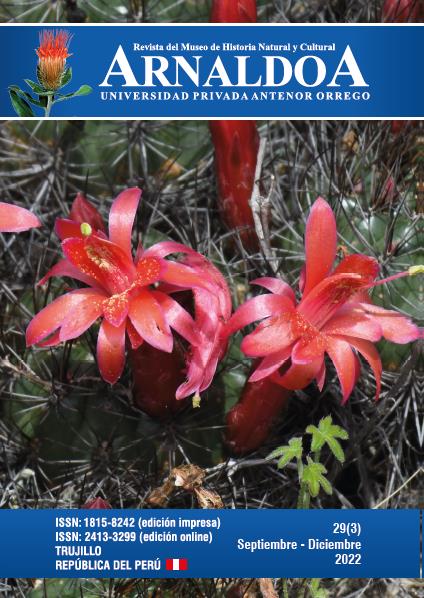Dietary inclusion of the microalgae: Chlorella peruviana in the growth of Colossoma macropomum fry
DOI:
https://doi.org/10.22497/1690Keywords:
microalgae, gamitana, functional food, growth, length and weight ratioAbstract
The present work evaluated the effect of the dietary inclusion of Chlorella peruviana on the growth parameters and increase curves of the length-weight relationship of Colossoma macropomum fry. Four diets were prepared with different levels of addition of C. peruviana (0%, 2.5%, 5% and 7.5%). A total of 180 fingerlings with length and initial weight of 4.03 ± 0.62cm and 1.94 ± 0.65 gr respectively were used, they were cultivated in twelve glass aquariums of 0.27 m3 volume at a capacity of 15 fish per aquarium and fed three times a day, for 70 days, at a feeding rate of 15% during the first 50 days and 3% in the last 20 days of study. The body composition of the fish was determined at the beginning and at the end of the study. The water quality was monitored daily (dissolved oxygen, temperature and pH) and fortnightly (nitrite, ammonium, alkalinity, hardness and chlorides). Significant differences (p≤0.05) were registered in the evaluated treatments, the diets with the addition of C. peruviana at 2.5% and 5% were those that influenced the growth of C. macropomum. Presenting a negative allometric growth, with an increasing trend in treatments at 0%, 5%, 7.5% inclusion of C. peruviana.Downloads
Download data is not yet available.
Downloads
Published
2022-12-30
Issue
Section
Artículos originales
License
By submitting a paper to the journal, it is understood that the authors agree to transfer the publication rights to the journal once it is accepted.
It is permitted to share and adapt the contents of this journal in any medium or format always if the original source is properly cited and there are not commercial purposes.







